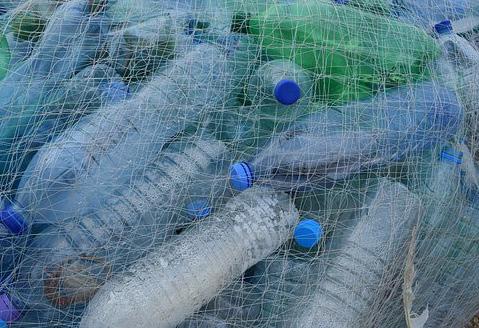
5 minute read
South Africa’s critical wastepaper shortage
by 3S Media
South Africa’s critical

Advertisement
The South African paper recycling industry is facing a critical shortage of various grades of wastepaper, in particular pre- and post-consumer kraft cardboard. he Paper Manufacturers
TAssociation of South Africa (Pamsa) is concerned about the shortage of wastepaper within the South African recycling industry. The organisation has even warned that should this trend continue, it will put even further pressure on domestic paper mills.
“The K3 and K4 paper grades are used in the production of paper packaging such as corrugated cases for the export market and transit of domestic goods,” explains Jane Molony, executive director, Pamsa. With the citrus season now complete and fewer cardboard boxes in circulation, there is less material available to recover.
On average, 1.2 million tonnes of wastepaper are recovered in South Africa annually, with more than 90% of this being locally recycled into new paper, packaging and tissue.
WASTEPAPER SHORTAGE
Demand exceeds supply
The disruption of Covid-19 on supply chains has had a direct effect on the consumption, demand and recovery of paper products. “With offices and schools remaining closed or on rotation during 2020 and early 2021, there was less paper to collect,” says Molony, adding that there is a rising demand for paper packaging with the move to online shopping and to a more environmentally responsible form of packaging.
Various large retailers also embraced online shopping and delivery platforms over the last few years. These changes in consumer shopping behaviour saw the demand for paper packaging – specifically made of brown/kraft paper/ cardboard. This type of wastepaper has proven to be a more renewable and recyclable form of packaging.
“The challenge, however, is that – at the same time – South Africa is experiencing a shortage with regard to these specific wastepaper grades that serve as ‘stock’ in the recycling process to manufacture new packaging material.”
Along with the disruptions to major international shipping routes, the continued reduction in stock levels is driven by a




significant appreciation in export prices of wastepaper. As a result, wastepaper traders are favouring the export market.
According to Molony, a paper mill using recovered wastepaper requires 21 days of wastepaper stock per grade for optimal operations. Prior to the Covid-19 pandemic, paper mills could hold adequate stock levels of kraft, mixed and office paper for at least 30 days.
More recently, domestic mills have had to consume more of their stock levels, resulting in an average 63% deterioration of stock levels from 36 days to 13 days.
Local industry cannot compete with export prices
Exporters of locally recovered wastepaper supply large foreign buyers.
“Some of these buyers exceed the size of the combined South African paper industry and can afford to pay significantly higher prices for wastepaper than our local manufacturers,” says Molony.
Pamsa’s members have invested billions of rand into the recycling value chain and are the primary source of demand for recovered wastepaper.
These companies collectively employ around 16 300 people while also supporting a thriving network of informal waste collectors and small recycling enterprises.
Molony notes, “The International Trade Administration Commission is working closely with all players in the sector to ensure that export permits are well managed.”
Wastepaper constitutes a significant portion of raw material for some 80% of local paper manufacturers who produce packaging paper and tissue.
Paper mills obtain wastepaper from a variety of sources: • industry-led activities through the collection and purchase of pre- and post-consumer recyclable paper • various paper pick-up programmes, including commercial, kerbside, school, church, community, housing complex and office programmes • independent third-party recyclable material traders.
Increased waste separation
Paper packaging – such as cardboard boxes – makes up a large portion of the paper collected for recycling, at 77%. Around 40% of office paper is collected; it is often archived, and many homes, businesses and schools are not conscientious with waste separation.
Molony appeals to all businesses and households to separate their paper and paper packaging from general waste. “You can simply leave the items in a box or bag next to your bin for your local informal recycling collectors.”
Used office paper, cereal boxes, brown cardboard boxes, milk and juice cartons, and even egg boxes are just some of the paper items that collectors will take to buy-back centres.
“We need to see increased and better separation-at-source by larger users of paper – businesses, schools and travel/tourism. Paper needs to be separated from wet waste to maintain its integrity and quality – wet, degraded products will fetch a lower price for the collectors/sellers. We also need more support from the media industry to carry this message.
Trends for 2022
“We are seeing more people and organisations becoming conscious about the impact that products and packaging have on our environment. With the increasing popularity of online shopping and paper packaging in general, the demand for paper packing will continue to increase through 2022, which will most likely add to the pressure of the supply shortage currently experienced,” says Molony.
Pamsa is very excited about the new Extended Producer Responsibility (EPR) legislation in place. These regulations will help to further improve paper recovery, recycling and research efforts, with EPR gaining traction as companies start to pay their fees.
“Such funds will help to support awareness campaigns and develop infrastructure to improve the collectability and recovery of paper products. Hopefully, as a result of many of their recycling initiatives, it will alleviate the pressure of the current shortages,” she concludes.

















